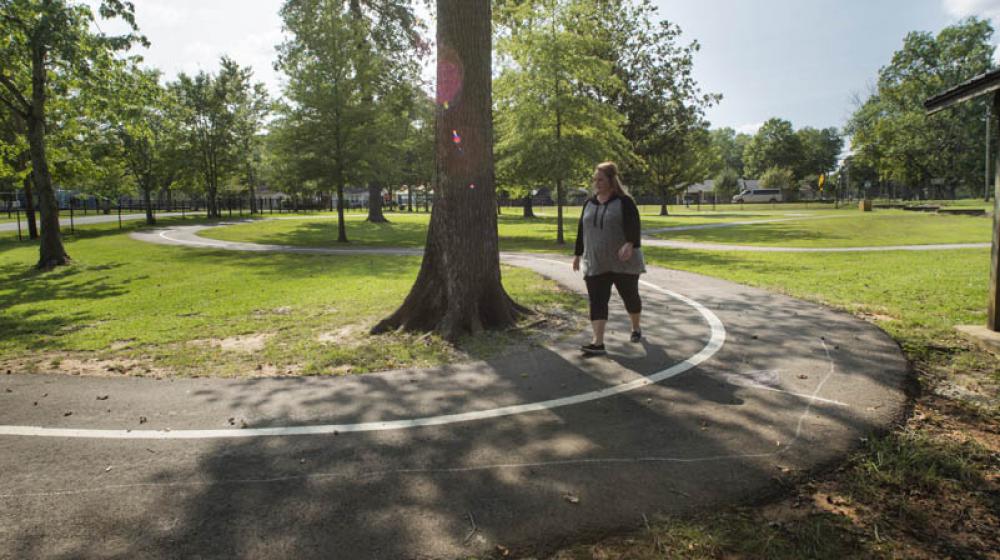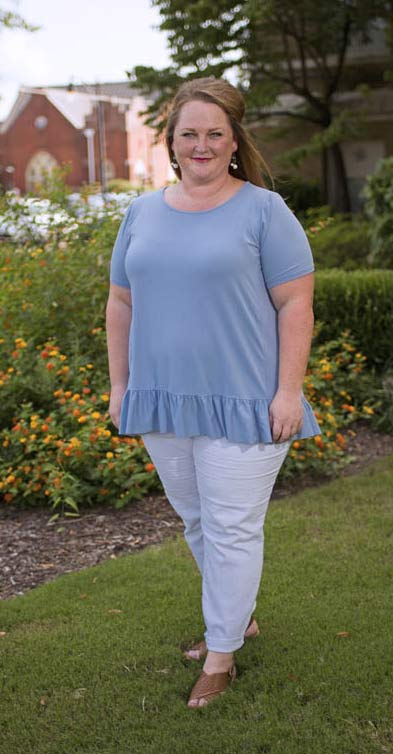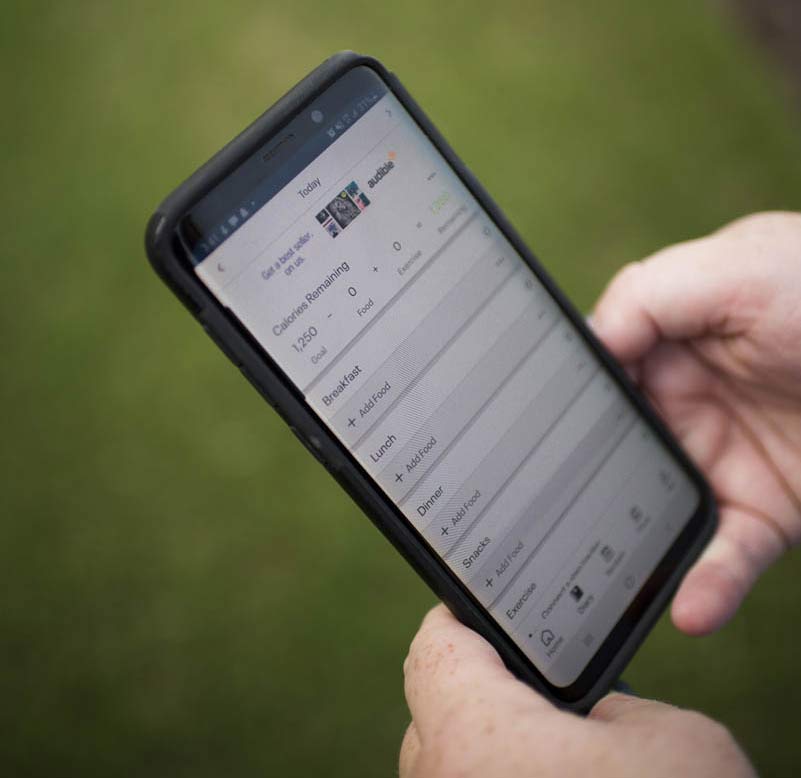Keeping the Pace

Weight loss is not Greenlee’s only goal.
Extension continues educational efforts despite pandemic
Story by Susan Collins-Smith • Photos by Kevin Hudson

Serra Beth Greenlee takes a lot of classes at her local Mississippi State University Extension Service office in Alcorn County. When she saw the Walk-a-Weigh program would be offered virtually, she signed up.
“Anytime the Extension Service offers a class I’m interested in and it works with my work schedule, I take it,” she says. “I’ve taken all kinds of classes—canning, sewing, quilting. I really enjoy it, and I’ve made lots of friends.”
The Walk-a-Weigh program gives people the right tools to live healthier lifestyles by helping them improve their eating habits and stick to exercise routines.
Typically, the 15-week program is delivered face-to-face and includes some type of group physical activity and an educational session. However, Extension modified the delivery of all its educational programs during the COVID-19 pandemic, which moved several classes and workshops to an online platform.
“When our offices closed under the stay-at-home order, agents with family and consumer science responsibilities in Extension’s northeast region got together to offer a series of educational videos through Facebook,” says Mary Linda Moore, Extension agent in Alcorn County. “Although our offices are open again, we are limiting in-person classes and meetings to help limit the spread of COVID-19 and protect our clients and communities.”

The virtual meeting is held on Facebook Live each week and remains available for participants to view at their convenience. Class materials are shared with participants through email and include information on topics such as understanding nutrition labels, proper use of pedometers, recommendations for cutting calories, and the right ways to stretch before and after exercise. Participants also get recipes for healthy meals and snacks.
“I’ve enjoyed the virtual format,” Greenlee says. “The class is from 10 to 10:30 on Monday mornings, so, if I can’t watch it live, I can go back anytime and see it. I can ask questions and make comments and still get a response.”
The program started on August 3 and, as of early September, Greenlee had lost 12 pounds.
“Weight loss was my goal when I signed up for the class. I have two girls that I want to be able to keep up with,” Greenlee says. “But I’ve also learned more about heart disease and other chronic conditions and how paying more attention to what I eat and my physical activity can help me avoid some of these conditions.
“One of the most helpful things was the food journal I got in the packet when I signed up. Every day I write down everything I eat and the calories. I had no idea how many calories I was consuming,” she adds. “I was surprised when I started tracking it.”
Greenlee emphasizes she has had no trouble staying consistent with her exercise routine or connecting with fellow classmates even in a virtual setting.“My family is very supportive,” she says. “We go out for walks a lot, and I’ve found an app that periodically sends me quick exercises to do, like pushups or sit ups. People who are in the class share ideas and interact on Facebook.”


